We need a good backup plan to recover from unexpected situations like human errors, Disk failure or RAID, and corruption of file systems. The following Free Open Source Backup Software for Ubuntu/Linux, which we will discuss, is very helpful to avoid these situations.
But before our main discussion, let’s discuss some necessary things we need to know about backup software.
- Open source software: we should use software with the source code available, which may be free and have the authentication for modification. It will help us ensure that we can recover data if the vendor/project stops working on software or refuses to provide patches.
- Cross-platform support: We must ensure that backup software will work on all OS platforms on all desktop and server operating systems.
- Data format: We need to check that It has an open data format that ensures we can recover data if the vendor or project stops.
- Auto-changers: Auto-changer is a backup device. They include a library, near-line storage, and an autoloader. Auto-changers allow us to load tasks, mounts, and label backup media.
- Backup media: Before starting, we need to ensure data backup in other external files.
- Encryption DataStream: We need to make sure all client-to-server traffic is encrypted.
- Database support: We need to ensure all backup software can backup database servers such as MySQL or Oracle.
Best Backup Software for Linux
Here, we have listed the 18 Best Backup Software for Linux. This list is in a generic order and doesn’t follow any sequence.
1. Bacula
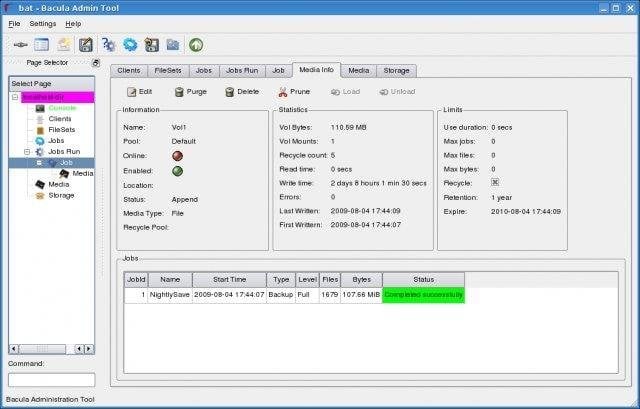
Bacula is an Open Source Backup Software. This enterprise-level computer backup system can work in various networks. It is an automated task that does not require intervention from a systems administrator or computer operator. Bacula supports Linux, UNIX, and Windows backup clients.
It also supports a wide range of professional backup devices and tape libraries. Administrators and operators can configure the system via a command-line console, GUI, or web interface. Its back end is a catalog of information stored in MySQL, PostgreSQL, or SQLite.
Features:
- Backport code from BEE
- New Qt-based Tray Monitor
- Maximum Concurrent Jobs for Devices
- Allow Compression and Accurate Backup
- Accurate File Set Options
- Tab-completion for Console
- ACL Updates and Extended Attributes
- Virtual Backup and Duplicate Job Control
- TLS Authentication
2. Amanda
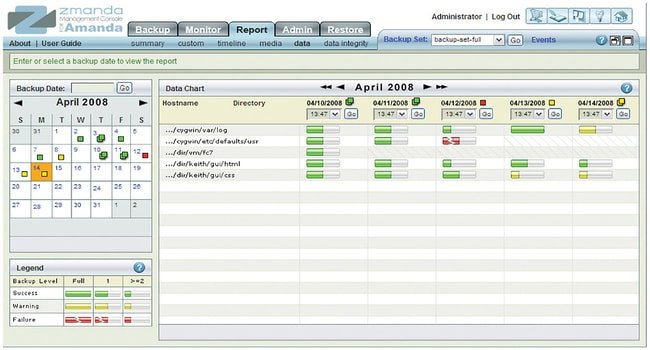
Another very interesting Open Source of Backup Software for Linux is Amanda. It can work on GNU, Unix/Linux, and Windows. It has native backup facilities and formats that can backup on Unix/Linux. We can also use a single backup server to back up from several machines on a network.
Features:
- Broad platform protection
- Database and application protection
- Backup Fault Tolerance
- Flexible Media Options
- Rapid Installer
- Intelligent Scheduler
- Automated Data Retention and Disposition Policy
3. Rsync
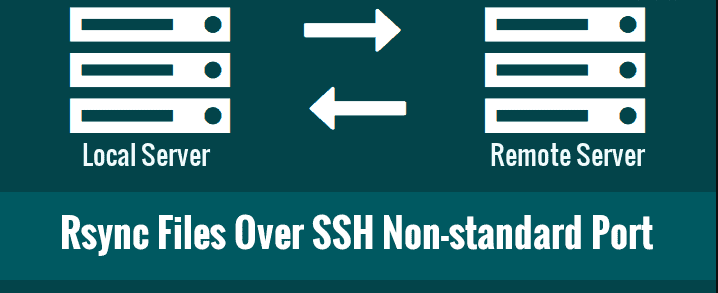
Rsync is a command-line Linux backup tool, but now it has a graphical user interface. Linux users, especially system administrators, like it very much. Its graphical interface is called Grsync. An automated backup can be done through the command line through experienced System Administrators.
Features:
- Requires less memory to run
- Incremental backups
- Update the whole directory tree and file system
- Both local and remote backups
- Preserve file permissions and ownership
4. Time Vault
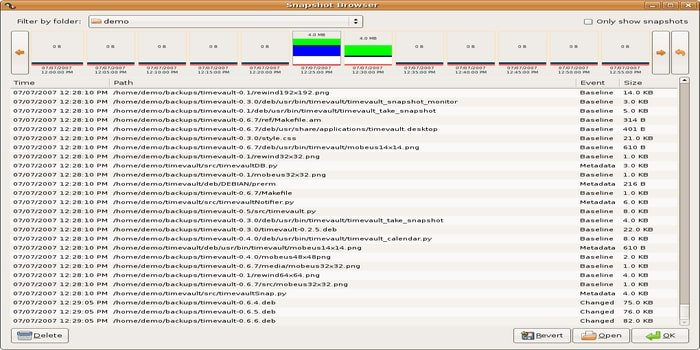
Time Vault is an Open Source Backup Software for Linux. It’s equivalent to Time Machine from Apple. It creates incremental backup files that can be restored at a later date. It can take snapshots, which can be stored in a directory at a certain point in time. These snapshots are very little spaced, so we need not entire backup files.
Features:
- Creates incremental backups
- Take a snapshot of the entire store as a backup
- Creates more versions of backed-up data available for restoration
- Nice looking graphical front end
- The installation process is pretty straightforward.
5. Clonezilla
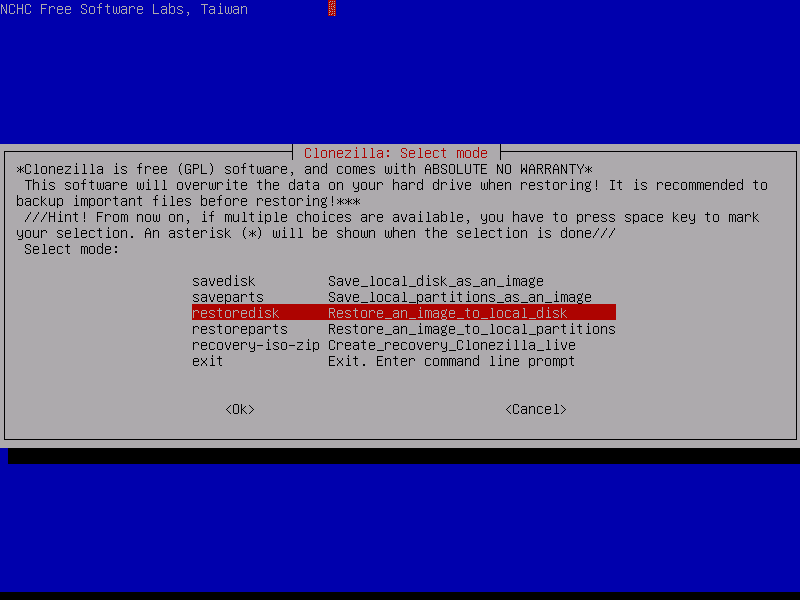
Symantec Ghost Corporate Edition launches the Open Source Backup Software Clonezilla based on DRBL. The primary mechanism of this software includes Image partition, partial clone, udpcast, etc.
To bare metal backup and recovery udpcast, two types of Clonezilla are available. These are Clonezilla live and Clonezilla SE. Clonezilla Live is used for single-machine backup and restore, and Clonezilla SE is used for a server.
Features:
- Multi-file System Support
- BIOS or UEFI Machine Bootable
- Unattended Mode
- Customizable Imaging & Cloning
- Single Image Restore to Multiple Local Devices
- Image Encryption
- Whole Disk/Partition Save and Restore
- Multicast Support for Massive Cloning
6. Duplicity
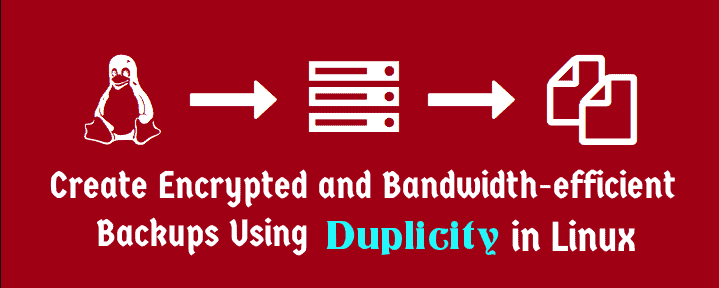
Duplicity backups directories by producing encrypted tar-format volumes. It uploads them to a remote or local file server. Duplicity uses librsync, which is incrementally archived. It only keeps recording the parts of files that have changed since the last backup. Duplicity uses GnuPG to encrypt and/or sign this archive.
Features:
- Easy to use
- Encrypted and signed archive
- Bandwidth and space-efficient
- Standard file format
- Choice of remote protocol
7. FlyBack
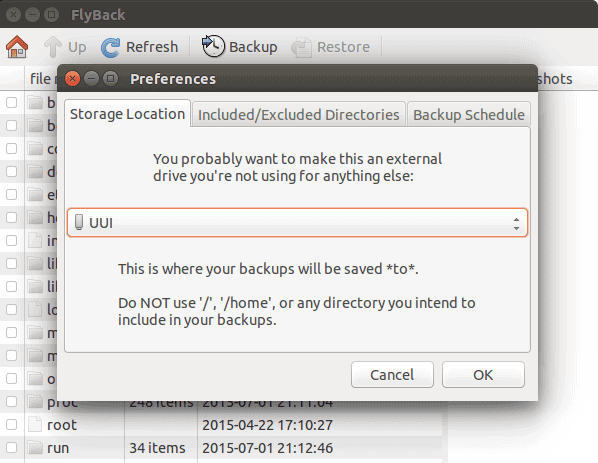
Flyback is created based on Rsync. It creates incremental backups of files like the other Rsync-based backup, which can be restored later. A chronological view of a file system allows individual files or directories to be previewed or retrieved one at a time. They present a view of a standard file manager that enables additional controls to go forward and backward.
Features:
- Automatically run selective backups
- Selectively delete specific backups
- The ability to backup user-specified directories to any place includes an external disk.
- Scans the entire directory structure when performing a backup
- Schedule multiple backups are possible
- User control over the backup location, inclusion, and exclusion list
- Has a friendly graphical user interface
8. BackupNinja
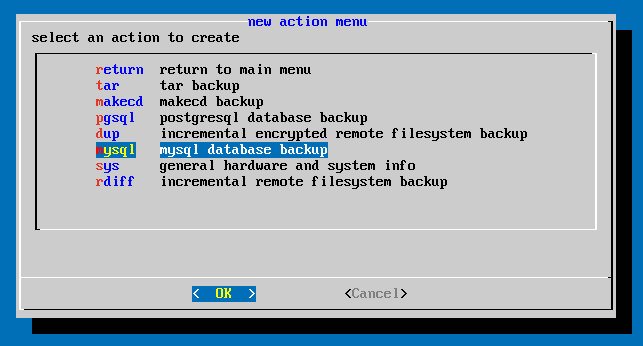
Backupninja is a useful reinforcement backup tool for Linux. Backupninja enables clients to plan reinforcement action design documents. Those documents can be hung in /etc/backup.d/ Directory. Backupninja performs secure, remote, and incremental reinforcements over a system.
Features:
- Easy to utilize reinforcement set maker called Ninja partner
- Works with Linux virtual servers
- Database reinforcement arrangement included
- Scheduled reinforcements
- Email alarms
9. UrBackup
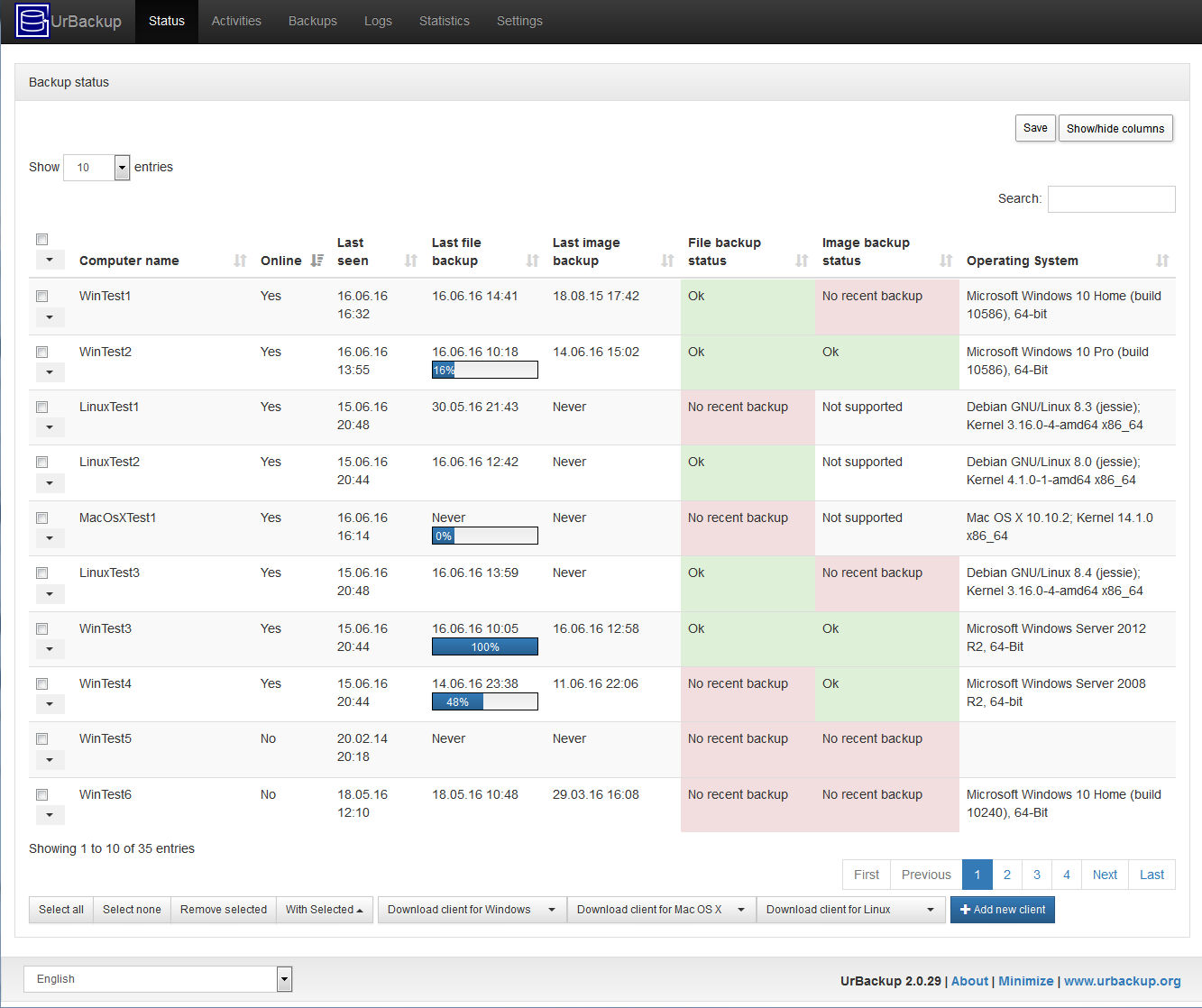 UrBackup is a user-friendly, open-source backup system that uses a combination of image and file backups to ensure data safety and fast restoration times. The system is designed to perform backups while the computer runs without interrupting ongoing processes.
UrBackup is a user-friendly, open-source backup system that uses a combination of image and file backups to ensure data safety and fast restoration times. The system is designed to perform backups while the computer runs without interrupting ongoing processes.
UrBackup monitors specific folders you want to back up, enabling it to detect any changes for incremental file backups promptly. This results in rapid backup times.
You can restore your files via the web interface, the client, or Windows Explorer. In addition, the backups of the drive volumes can be restored using a bootable USB stick, also known as bare metal restore.
10. Duplicati
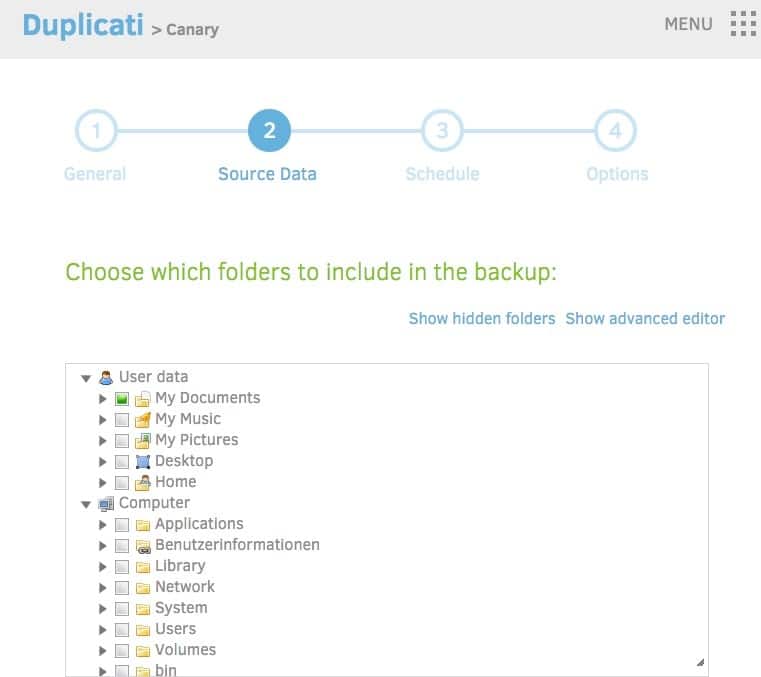 Duplicati is a free, open-source backup software that works with standard protocols and popular services. It enables storing encrypted backups online for Windows, macOS, and Linux and can be used commercially.
Duplicati is a free, open-source backup software that works with standard protocols and popular services. It enables storing encrypted backups online for Windows, macOS, and Linux and can be used commercially.
Backup files and folders using strong encryption with AES-256. Duplicati offers incremental backups, data deduplication, and a built-in scheduler and auto-updater. Run backups from any machine via the web or command line.
Duplicati was created specifically for online backups, with efficiency and network stability in mind. It is not only data-efficient but also has excellent handling of network issues.
For example, interrupted backups can be resumed, and Duplicati regularly tests the content of backups to detect any issues before it’s too late. This way, broken backups on corrupt storage systems can be detected and addressed promptly.
11. FreeFileSync
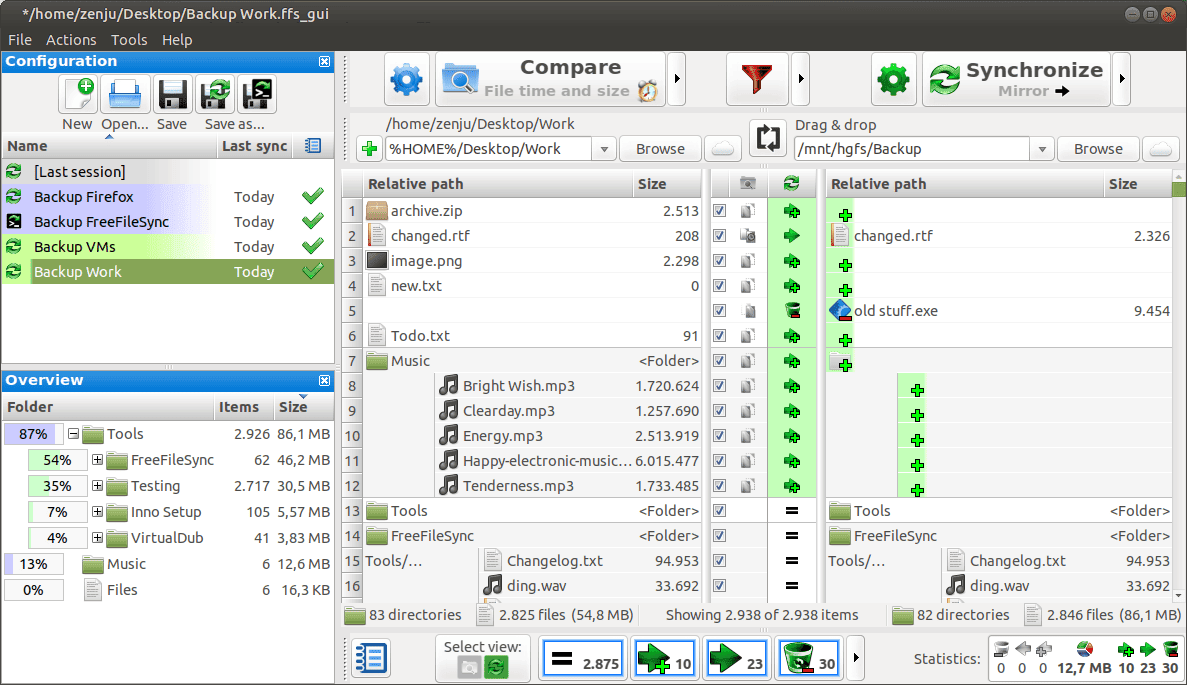 If you’re looking for a reliable tool to compare and sync folders, FreeFileSync is the perfect solution for you. It creates and manages backup copies of your important files and saves you time by transferring only the necessary data between source and target folders. Moreover, FreeFileSync is an open-source software easily installed on Windows, macOS, and Linux.
If you’re looking for a reliable tool to compare and sync folders, FreeFileSync is the perfect solution for you. It creates and manages backup copies of your important files and saves you time by transferring only the necessary data between source and target folders. Moreover, FreeFileSync is an open-source software easily installed on Windows, macOS, and Linux.
12. Kbackup
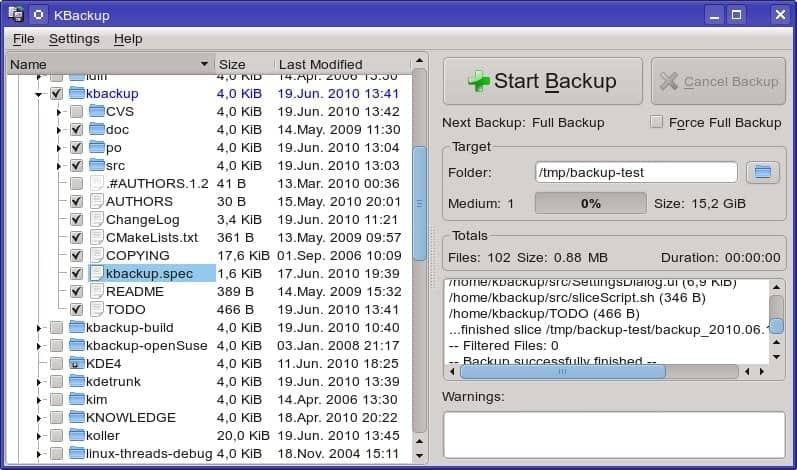
Kbackup is a straightforward backup tool for Linux OS, which can also be used in UNIX. It takes a backup after creating archives and compressing them using tar and gzip utilities. It’s very user-friendly and has a lot of menu items to operate. It also supports encryption and double buffering.
Features:
- compression, encryption, and double buffering supported
- Supports full or incremental backups
- High reliability
- support for tape drives, floppies or removable media, remote backup across networks
- Document extensively
13. BackupPC
BackupPC is a fully cross-platform software that can run on all OS. This software is designed for enterprise use. BackupPC supports full file compression and uses small disk space. BackupPC doesn’t need any client-side software to run. This can provide a very high-performance backup.
Features:
- Very flexible Flexibility during the backup restoration
- No client-side software is needed
- A full set of restore options is supported
- Huge documentation is available
- Powerful web user interface
14. Fwbackups
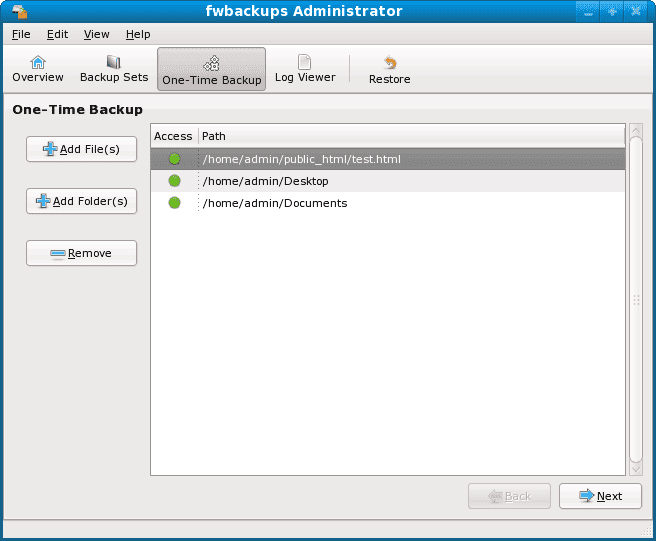
Fwbackups is another Free Linux Open Source Backup Software that supports cross-platform. Fwbackups has vibrant features and a user satisfaction rate. One of the exciting things about Fwbackups is that the user can take part in developing this software and can only use it as a tester. It has a user-friendly interface that can be used as a secure backup.
Features:
- An excellent and simple interface
- Very much flexible in the backup configuration
- Backup can be done remotely
- The entire file can be backed up
- Options for excluding files and directories
15. Simple Backup Suite
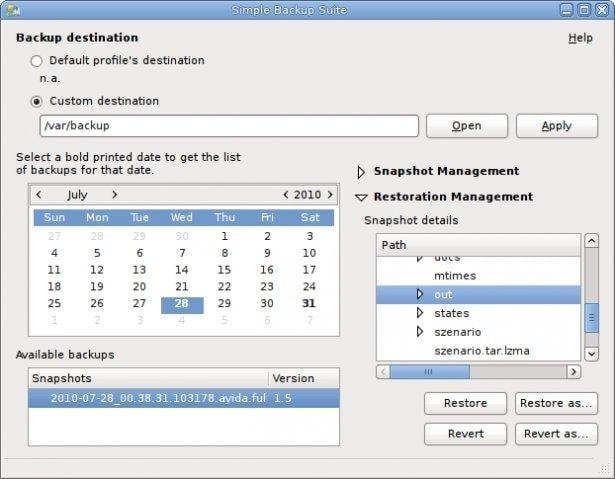
The sbackup suite provides a user-friendly backup solution for the Gnome desktop, with all configurations accessible via the Gnome interface. Paths, files, and regex can be included/excluded. Supports local/remote backups.
Features:
- Multiple backup profiles
- Compressed and uncompressed backups
- Login and mail notification is available
- Two types of backup- schedule and manual
- local and remote backups
16. Back In Time
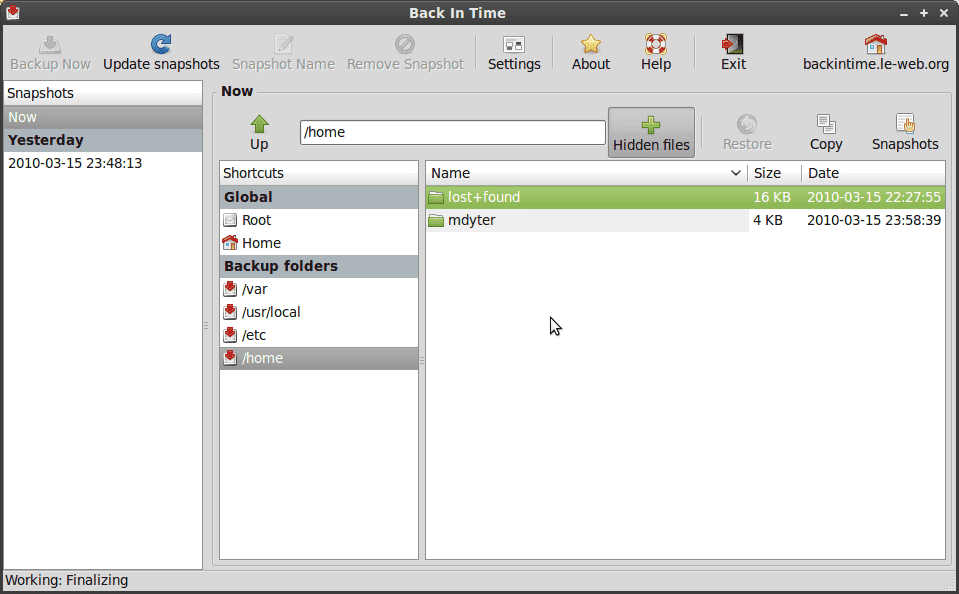
Back In Time is straightforward and simple to utilize the backup tool for Linux, and it works by taking snapshots of determining indexes and sponsorship.
Features:
- Two types of backups: Manual and automatic.
- Directories backup.
- Back In Time Backup
- Scheduled backup
17. Mondorescue
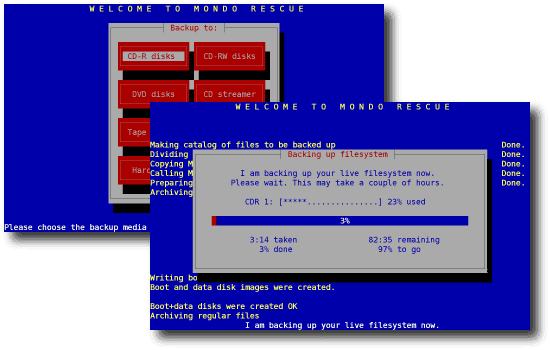
This is one of the best free open source backup software. Mondorescue is very reliable because it has an extensive collection of comprehensive features. It can perform backups from personal computers, workstations, or servers. Backup directories can be circle partitions, tapes, NFS, CD-[R|W], DVD-R[W], DVD+R[W], etc.
Features:
- Linux installation can be cloned
- Non-RAID backup can be restored as RAID
- system running on one format and restored as another
- Verify the integrity
- can backup Linux/Windows systems, including the boot sectors
18. Box Backup Tool
Box Backup Tool is a fully automated, open-source backup software designed for Linux. With this tool, you can easily store backup data on a server and restore it quickly whenever needed. It provides users with the option to choose between optimized and documented backup methods based on the location of their files – whether on a local server or a live server.
Features:
- Online backups
- Automated backups
- Backups in files
- Behaves like tape
- Easy and cheap to run a server
Final Thought
Backing personal computers or servers is always essential to prevent permanent information misfortune. Therefore, becoming acquainted with different backup tools is very important, particularly for system administrators with extensive enterprise-level information and personal computers.
It is always a conventional practice to keep on going down information on our computers; this should either be possible physically or configured to work consequently. Numerous backup tools have different features that allow users to set the backup, backup time, what to backup, logging backup exercises, and more.
Did you like this list of best and free open source backup software for Linux? If that happened, please share this with your friends on social media, and apparently, this will keep UbuntuPIT alive.
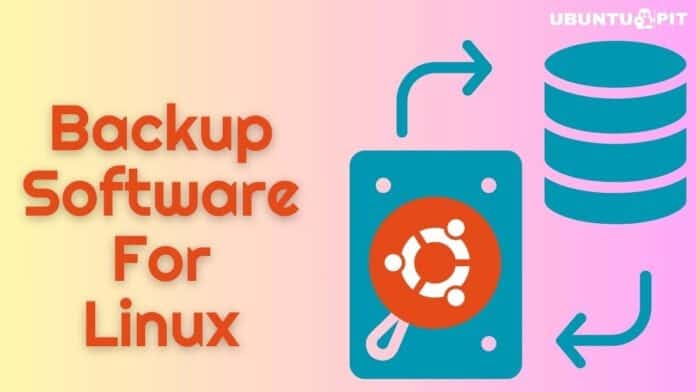
An excellent source. Thank you.
for Linux Mac Windows you may add the very handy https://freefilesync.org/
I am a single user with an Ubuntu 20.04 Gnome basic setup.
I like unencrypted, uncompressed COPY style backup, today’s external storage is cheep, more convenient to have my backups in the original file format, not in tar files.
I tried several systems over the past few weeks, because most articles do not mention detailed features and I wasted a lot of time, downloading, installing, removing…
But, thank you
Hi Alex,
On my laptop, I have Windoze 10, Ubuntu 18.04 LTS, and 20.04 LTS. I tend to agree with your comments which however were truncated. Would love to learn your final choice.
For something purporting to be in 2020 there are some obvious gaps and the article does not make a clear distinction between file level and image level backups. I’m a timeshift/backintime user – no mention of timeshift, no mention of luckupbackup.
For image backups, clonezilla is the grand-daddy of them all, but very unfriendly for new users. No mention of redo, now relaunched as rescuezilla or foxclone. Both have simple to use GUI interfaces.
Please stop listing Bacula so high up: that beautiful picture of an admin tool is for the paid edition. The free edition of that tool is nowhere to be found. The community edition is all command line (except a useless PHP GUI that only shows some data). Also it’s impossible to use, even for experimented users.
What about Lucky Backup?
Great list, thanks for listing this and give features!
What i am missing here is pros and cons, but i guess you haven’t test all software and maybe are unable to tell this.
It’s hard to make a desicion from this list and will have to test multiple packages or find reviews before this list make sense.
So altho i really like this information…it’s still missing some important information for people to make a desicion based on this post.
AMANDA/ZMANDA is a backup solution that allows the IT administrator to set up a single master backup server to back up multiple hosts over network to tape drives/changers or disks or optical media. Amanda uses native utilities and formats (e.g. dump and/or GNU tar) and can back up a large number of servers and workstations running multiple versions of Linux or Unix.
The main advantage of this product is Amanda/Zmanda supports both tape-based and disk-based backup. Amanda supports tape-spanning – i.e. if a backup set does not fit in one tape, it will be split into multiple tapes. Among its key features is an intelligent scheduler which optimizes the use of computing resources across backup runs.
Amanda Enterprise Edition is a commercial version of Amanda which has been developed by Zmanda. It includes a management GUI—Zmanda Management Console (ZMC)—and other features such as scheduler, plugin framework, and also an optional cloud backup service support. The cloud backup option uses the Amazon S3 service from Amazon Web Services as the cloud storage provider and enables safe offsite storage of the Amanda backup data.
Nice and Useful Article , thanks a lot .
Thanks for sharing Backup Software for Linux. very greatful article, I hope you will share more information for your Blog. Keep us sharing more interesting posts.
thank you!
What about UrBackup (https://www.urbackup.org)?
Few commands in cron / shell script solve all of these features.
I never used any backup software instead of script, even I early backup on tape.
Duplicati (at https://www.duplicati.com/ )
deserves a look for this category.